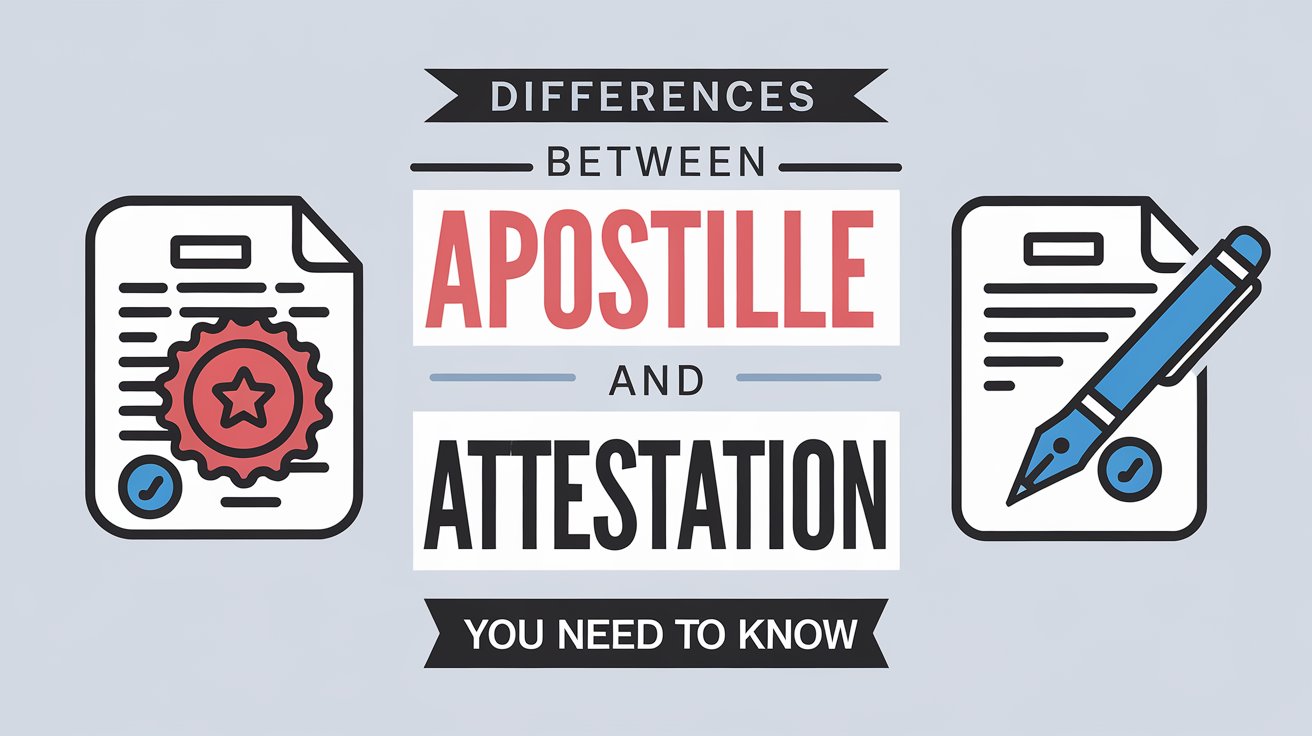When you travel overseas, whether it is for a job, education or whatever reason it may be, you will need to provide a set of legal documents to various government or government-sponsored entities in both your home country and the country you intend to visit. This is to make sure you have submitted all of the required data while filing for the visa. Verifying your documents is necessary so that the government of the nation you plan to visit is aware of your identity, the reason you are entering their territory, and the activities you plan to engage in. The documents’ authenticity stamp attests to their legitimacy and the accuracy of the information they contain. However, you might need to obtain your documents apostilled or attested depending on where you want to travel.
What Is Attestation?
The process of attesting a document involves confirming its legitimacy in order for it to be recognized as valid in another nation. Multiple authorities at various levels are involved in this multi-step process. Following is an outline of the common steps in the attestation process:
Notary Attestation
The authenticity of the document is initially verified by a notary public attesting to it.
Home Department Attestation
The State Education Department must provide the necessary authentication in the case of educational documents.The General Administration Department or the Home Department is in charge of personal documents. The authority certifying the educational document determines whether the attestation is HRD or SDM; HRD is completed by the Human Resource Development department, while SDM is completed by the Sub-Divisional Magistrate.
Ministry Of External Affairs (MEA) Attestation
The documents are further verified by the MEA of the home nation.
Embassy Attestation
The last step is the attestation in the home country by the destination country’s embassy.
In order to ensure that the document is authentic and reliable for officials in the destination country, each of these steps adds an extra layer of verification. Documents meant for usage in nations that are not members of the Hague Convention usually need to be attested.
What is Apostille?
An apostille is a document that certifies the validity of a certificate and is used in nations that are members of the Hague Convention. The form is computer-generated and attached to the reverse side of the document with a unique identifying number. Records are kept online with this unique identifying number, making it easier for concerned authorities to verify the authenticity. Compared to the attestation process, the apostille procedure is typically simpler and more brief. This is how it functions:
Notary Attestation
A notary public first authenticates the document.
Issue of Apostille
The apostille is issued by the home country’s recognised competent entity. This is the MEA or an equivalent organisation.
Difference Between Attestation and Apostille
Document authentication techniques used for use in foreign countries include apostille and attestation. The nations in which they are accepted and the authority that issues them, however, vary.
Definition
- An apostille is a document that certifies the location of issuance of a public document so that it can be utilised in nations that have ratified the Hague Convention.
- Attestation is a process used to confirm a document’s legitimacy for usage in non-Hague Convention member nations.
Issuing Authority
- The term “attestation” describes the attestation procedure that a nation’s Ministry of External Affairs (MEA) conducts. The task of attestation of documents for use abroad is handled by the MEA or an analogous agency, in each nation.
- Apostilles are a type of specialist authentication that are granted by a competent authority nominated by a nation that has ratified the Hague Apostille Convention. Apostilles are normally issued by a government department or agency, though this may not always be the case in other nations.
Time And Cost
- Because there are several steps involved in the attestation process, it usually takes longer and costs more money.
- The apostille procedure is typically less expensive and faster.
Recognition
- The majority of nations who do not have formal membership in the Hague Apostille Convention recognise and accept MEA attestation. These nations typically demand that documents be attested via the intended nation’s consulates or diplomatic missions.
- Countries that have ratified the Hague Apostille Convention acknowledge and accept apostille letters. The requirement for numerous stages of verification is replaced by this international treaty, which streamlines the document authentication procedure across member countries.
Documentation
- Formal documents, marriage and birth certificates, certificates from educational institutions, and other public records are typically subject to an apostille.
- Attestation can be applied to a variety of documents, including business and personal ones like powers of attorney and employment contracts.
Validit
- Apostille is usually recognised without additional legalisation
- Attestation could need extra checking by the embassy or consulate of the destination nation.
The destination nation and the kind of document used will determine whether attestation or apostille is appropriate. It is crucial for anyone producing documents for use abroad to comprehend the distinction between an apostille and an attestation. Although the goal of both systems is document authentication, there are considerable differences in their practicality, procedures, and recognition.
Conclusion
The main distinction between apostille and attestation is that the former is a simple and common method of legalising papers; it is mostly applied to documents used in Hague Convention member nations. On the other hand, attestation is the intricate, multi-step procedure used for documents that are not eligible for an apostille or that are not covered by the Hague convention. The precise requirements of the nation in which the document is to be used determine whether to utilise an apostille or an embassy for attestation.
